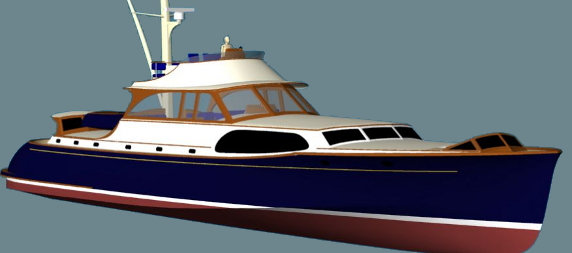Feasibility Study
 Consulting takes many forms, it may involve getting my opinion on a particular boat or it may include planning or concept sketches and design drawings of a required modification. Most of work falls into these areas:
Consulting takes many forms, it may involve getting my opinion on a particular boat or it may include planning or concept sketches and design drawings of a required modification. Most of work falls into these areas: - Stability Studies,
- Rig and Spar Design,
- Structural Modification,
- Feasibility Study,
- Market Research,
- Interior Design.
2015/09/04: Upcoming Article on Stability for Western Mariner Magazine: I have an upcoming article on stability in Western Mariner magazine.
-
Inspection, Overview of Project
Usually this relates to establishing some criteria to base decisions about the feasibility of converting or refitting/rebuilding an existing vessel. It includes research on current market value, pedigree, structural soundness and required alterations, possible styling and arrangement options, etc.
Inspection, Overview of Project
As part of a market research study that involved looking at several vessels, I recently did a feasibility study for the refit of the William Garden designed trawler, Tiger Bay. I took 85 photographs which were emailed to the buyer with my comments. I then wrote a list of immediate requirements (repairs, maintenance, and upgrades) with ballpark costs. The buyer decided to pass on that boat and then focused on an East Coast prospect built by Herd & Mackenzie in Scotland. I was able to recommend Steve Zimmerman to go and have a look at that vessel. Ultimately the buyer came around to thinking a new build would make more sense and I did a series of preliminary sketches incorporating features from the existing designs her had been looking at.
When I was first involved with Invader, I made a visit to the boat and spent a couple of hours on inspecting her, not a survey but an overview. I then made a list of about 35 projects that required attention to bring the boat to useable condition. These ranged from “replace freshwater tanks, plumbing, and pressure pump” to “replace main deck roof”. We then were able to put ballpark numbers (cost) to these projects and add them up for a ballpark budget. The prospective owner then had some basis for the go/no go decision.
As it happened, the decision was to go ahead and purchase the Invader. I became involved in the Invader rebuild project, designing a new pilot house, bulwarks, deckhouse, and complete new interior arrangement.
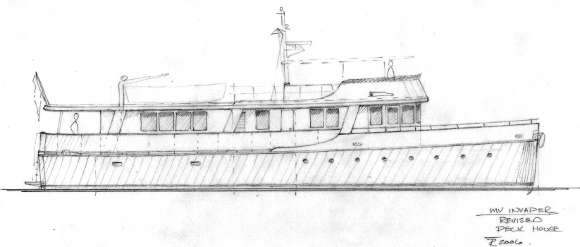
A sketch of Invader's revised deckhouse and profile for the feasibility study and design proposal.
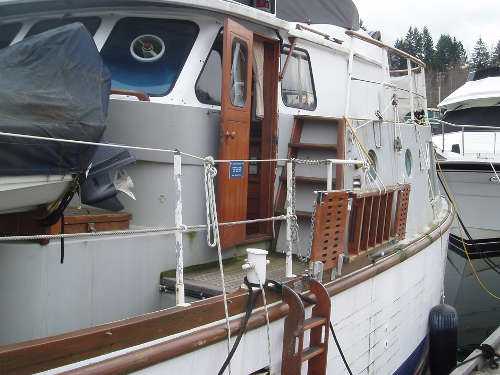
As part of a market research study that involved looking at several vessels, I recently did a feasibility study for the refit of the William Garden designed trawler, Tiger Bay. I took 85 photographs which were emailed to the buyer with my comments. I then wrote a list of immediate requirements (repairs, maintenance, and upgrades) with ballpark costs.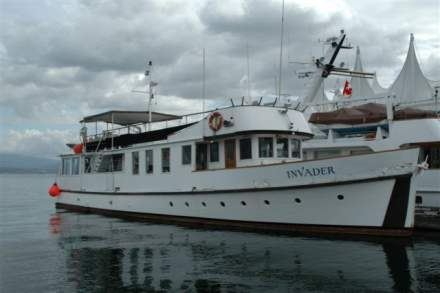
The Invader prior to her refit project. After my first visit, I made a list of about 35 projects that required attention to bring the boat to useable condition.
-
Research Establishing Pedigree, History
Usually this relates to establishing some criteria to base decisions about the feasibility of converting or refitting/rebuilding an existing vessel. It includes research on current market value, pedigree, structural soundness and required alterations, possible styling and arrangement options, etc.
Research Establishing Pedigree, History
The feasibility of many restorations usually hinges on pedigree, who was the designer, the builder, and/or original or previous owner? The most valuable boats are the product of a great designer, great builder, and famous owner. Boats with one or two of these assets are of lesser value. Real pedigree can be international (Fife for instance) or local, say a Wahl fishboat built in Prince Rupert BC.
Many boats have little recorded history, any scrap of paper adds immeasurably to the boats value. Usually there is verbal history but this must be verified wherever possible. Original drawings, receipts, letters, etc all add to the story and are invaluable in any restoration. One of the things I often get involved with is this establishing of pedigree through research in my extensive library. With 400+ hardback books, 4000+ periodicals, and hundreds of brochures, etc. dating back 50 years, research is time consuming.
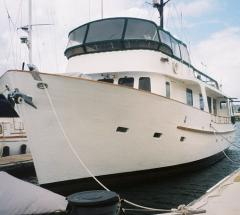 In the case of Vaquero, there was controversy as to whether she was a De Fever design or not. Eventually we established that, though she wasn’t actually drawn by De Fever, she was built by a yard turning out De Fever designs and is a close copy with variations. Part of this was found from 1960’s brokerage listings that I found in Sea Magazine.
In the case of Vaquero, there was controversy as to whether she was a De Fever design or not. Eventually we established that, though she wasn’t actually drawn by De Fever, she was built by a yard turning out De Fever designs and is a close copy with variations. Part of this was found from 1960’s brokerage listings that I found in Sea Magazine.
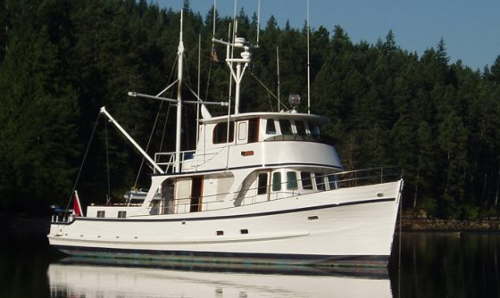
Island Eagle, 61' 1962 Wooden deFever Trawler, completed refit.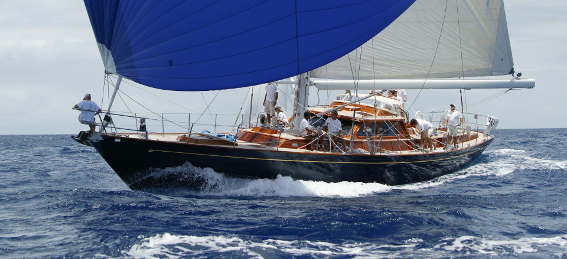 1992 Hinckley 70 production composite sailing yacht, BKYD
1992 Hinckley 70 production composite sailing yacht, BKYD
